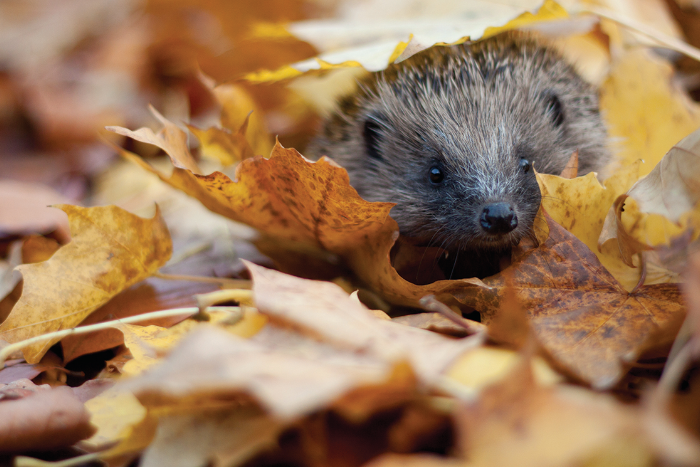
Think of our hedgehogs
By Rachel Shaw
Lincolnshire Wildlife Trust
One evening, I noticed the security light in the garden flicker on. I cautiously peered through a gap in the curtains, uncertain what or who would be out there.
Fortunately, the face I saw was of a hedgehog. I opened the curtains a little wider and watched him until he disappeared under the plants.
Life is tough for hedgehogs. They run the gauntlet of roads, litter, pesticides, slug pellets, rat traps, ponds with steep sides, strimmers, uncovered drains, bonfires and garden netting. On top of these death traps, the removal of hedges and very tidy gardens has deprived them of places to live. And pesticides have reduced the populations of insects, worms and slugs that they eat.
Once common, hedgehogs appear to be in freefall. It is estimated that the number of hedgehogs in the UK has dropped from 30 million in the 1950s to about 1 million in 2019. It’s now thought that in the past 13 years, they have declined by a further 46%.
It’s easy to feel powerless at the news headlines about the decline in wildlife but we can help hedgehogs. There are some really simple things we can do: check bonfires before lighting them, check long grass before strimming, don’t use slug pellets and don’t fence them in.
Although I have a healthy population of slugs and snails, my garden is definitely too small for a hedgehog. That’s not usual, most gardens are. Hedgehogs need a neighbourhood of interconnected gardens.
Every night they may roam as much as a mile as they travel through gardens in search of food. Ensuring hedgehogs can pass through your garden is one of the most important things you can do to help. It’s simple to do. If you have a fence around your garden, cut a 13cm square hole in the bottom of the fence. That’s big enough for a hedgehog to pass through.
If we all did that, hedgehogs would have more space to explore and more chance of surviving in our neighbourhood.
* Hedgehogs usually hibernate from October/November through to March/April. Research has shown that each individual is likely to move nesting sites at least once during this period and so can sometimes be seen out and about. During mild winters hedgehogs can remain active well into November and December.
